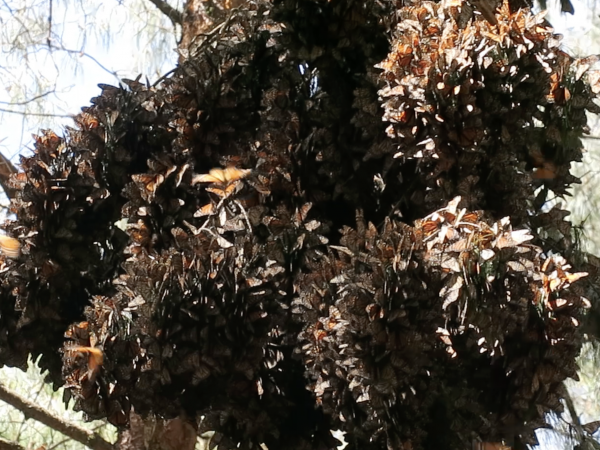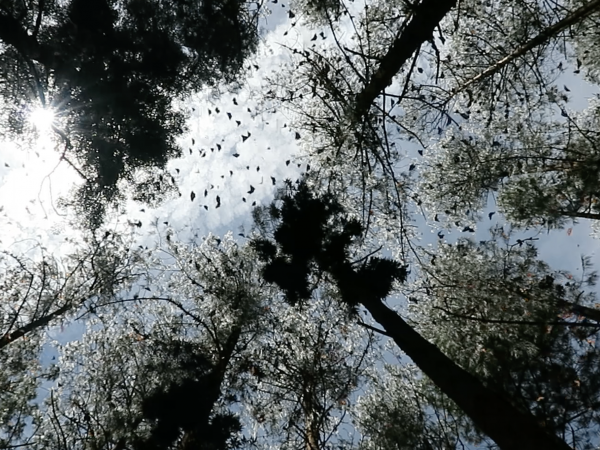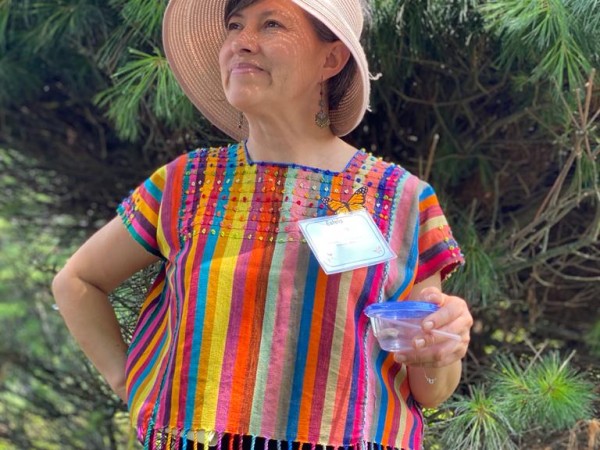Letter from Estela Romero: Breaking Departure Date Records
Published: 04/06/2022
Dear friends,
Friday, 1 April 2022
On Friday, I traveled to and reported on the situation in Río Grande where a remaining population of monarchs is now concentrated in a rather big area of around 100 trees. Monarchs are now only 500 meters away from the entrance to this wooded area. We all believe that these monarchs will take-off down to the cliff and valley of Angangueo to go around the mountain range of Sierra Chincua and continue northwards.
Mating is just unstoppable, even among weak monarchs who most likely will not live long. This is a forest where Oyamel fir and pine trees are both abundant. A little creek runs through the area with little water during these hot, dry and dusty days. However, the monarchs stop to drink. Monarchs still hang in big heavy clusters in a few trees, cover trunks and form many much smaller clusters all around.
I believe the last mass departure could happen by Monday.
Monday, April 4
I visited the Río Grande location this past Monday. Contrary to our hope, a significant population of monarchs remain.
It has been a month since the first monarchs moved down the mountain from the El Rosario Sanctuary to this location.
When I visited on Saturday, monarchs were roosting in the Pine and Oyamel fir trees forming small to sometimes large clusters. Much mating was happening. Today, however, mating simply seemed to have stopped. Many, many monarchs are alive and carpeting the ground. I had to walk with much care to avoid stepping on a monarch. These monarchs were mostly very quiet, but then would move rapidly as I approached, yet they were hardly able to manage any flight despite their apparent good physical conditions.
Water and nectar are scarce. The national meteorological service forecast severe heat over the next few days.
The eventual departure of these remaining monarchs will break the historic record of April 4th experienced in the late 90s, early 2000s.
Estela Romero
Angangueo, Michoacán, México.
Note to our readers: This article has been edited from the original English version for clarity.




